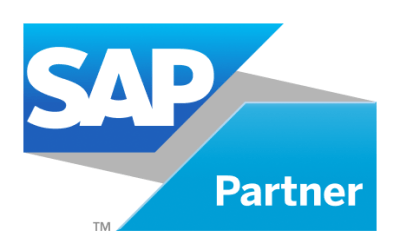The new Competency Framework from SAP PartnerEdge is an explicit all-in on cloud model which does not reward on-prem projects, and which introduces seven new competencies.

Beth Glasstetter, global vice president of partner ecosystem success at SAP.
SAP has begun the lengthy process of reconstructing a new recognition system for partners. The new Competency Framework from SAP PartnerEdge still uses specializations, as a product of process level and as building blocks toward earning tier-based competencies. There are three tiers in the program – Essential, Advanced and Expert – each of which require seven competencies and 21 specializations to achieve, and they provide a logo to communicate a partner’s level of expertise and maturity in an SAP solution, line of business or industry, in order to make them more attractive to prospects and customers.
“It’s a new framework, but it is also an evolution of what we had before,” said Beth Glasstetter, global vice president of partner ecosystem success at SAP. “We have tended to position this as new because it’s a dramatic change from what we had before. We have had Recognized Expertise partners and we have had typical Gold and Silver designations. We have taken a step back with this one and launched something new with the competency framework.”
Glastetter said that competencies – seven to start with 21 specializations – would completely replace Recognized Expertise. For example, the competency ERP spans across the specializations SAP S/4HANA Cloud and SAP S/4HANA Cloud, private edition. Each competency comes in three tiers: essential, advances, expert.
“Next year we will sunset Gold and Silver rights logos, because they will be replaced by the new framework competency logos,” she added.
 “Next year we will sunset Gold and Silver rights, because they will be replaced by the new framework,” she added.
“Next year we will sunset Gold and Silver rights, because they will be replaced by the new framework,” she added.
Glastetter stated that feedback from customers and partners was central to the changes.
“If we get the criteria correct to define competent partners, it doesn’t matter if they are in the US or the Netherlands,” she said. “Do they have a strong bench? Have they delivered successful products? Do they have a customer reference?” She stressed that the Competency Framework is oriented round these strengths, to make it easier for partners to highlight their expertise based on their knowledge, customer success and proficiency. The system is also now set up as a global one, where before it was local entities only, something Glastetter said will help partners in smaller countries.
“The new criteria honours projects completed in the last 24 months,” Glastetter added. “It will allow companies in smaller countries with very mature SAP practices to get to Advanced or sometimes Expert competencies. Advanced partners need only ten consultants and five delivered projects, while Expert partners only need 10 projects.”
Glastetter also said that this system isn’t like typical partner programs, when the rawest new partner will typically enter the program at its lowest level. Many partners will not achieve a competency, and do not need to have one in order to remain in the program.
“The program is not designed for all partners to qualify,” she said. “We now have 474 partners with at least one competency. 503 partners have not even achieved the Essentials competency.”
She noted that their Canadian partners have a somewhat higher rate of achievement at this point.
“Of our Canadian partners, 22% have at least one designation, which is a little higher than the total global percentage at this point, which is a little under 15%.”
The new system will also better help customers identify the right partner for their project by easily showcasing on the SAP Partner Finder partners’ attained competencies and specializations, number of delivered projects, locations where projects have been delivered and focus industries.
“Partners benefit because we will integrate the new designation they can achieve in their profile in the Partner Finder as they achieve them,” Glastetter noted. “That ability for a partner to differentiate themselves in the marketplace around customer lifetime achievement is important. It provides a lot more meaningful information for customers to start evaluation on who is the best partner for them.”
Glastetter also emphasized that this new framework marks an evolution of a long march by SAP to get its partners to follow the company’s lead and become more fully channel centric. Over much of the last decade, many SAP partners have continued to make excellent margins on their on-prem business, and while cloud adoption has increased, some are still reluctant to overhaul their business model as a result of their successful on-prem business.
“We are still in that evolution,” she said “With this new competency framework, this is the first time that the partner program is all in on cloud. None of our on-prem products will count towards certification. A partner can achieve Gold status if they don’t sell a single cloud solution today, but they won’t be able to going forward. With the cloud-only competency we check it all in real time, with a safeguard of 90 days. So there is quicker time to reward for partners who achieve improvements in status, or to demote partners who don’t maintain their status.”
After two years of consultations, the new program officially went live on August 1. The Silver and Gold logos will not be sunset until later in 2023 however, to give partners lots of time to gear up for the change.










